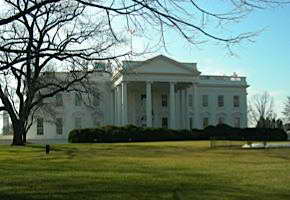August 10, 2011
8/10: Obama’s Re-Election Prospects: Voters Divide
President Barack Obama asserts that change doesn’t occur overnight. But, will registered voters nationwide give him the opportunity to fulfill his promise during a second term? According to this McClatchy-Marist Poll, voters divide. Four in ten — 40% — say they will definitely vote for the president next year while 40% think they will definitely vote against him. A notable one in five — 20% — is unsure.
Click Here for Complete August 10th, 2011 USA McClatchy-Marist Poll Release and Tables
When McClatchy-Marist last reported this question in June, 43% of registered voters thought they would definitely vote against President Obama while 36% said they would definitely vote for him. 21%, at the time, were unsure.
“Voters nationally continue to be mixed about President Obama’s re-election prospects,” says Dr. Lee M. Miringoff, Director of The Marist College Institute for Public Opinion. “The difference occurs when he is matched against specific GOP wannabes. Here, he has the edge against a host of possible challengers.”
Although 40% of independent voters report they plan to vote against President Obama next year, more than one-third of independents — 35% — currently plan to vote for the president, and a notable 25% are unsure. In McClatchy-Marist’s previous survey, only 29% of independents thought they would back the president while 43% planned to vote for another candidate. 28%, at the time, were unsure.
There has been little change among Democrats. 69% report they will support President Obama, 14% will not, and 16% are unsure. In June, those proportions stood at 70%, 10%, and 20%, respectively. Among Republican voters nationally, 7% plan to vote for the president. 77% say they will cast their ballot for another candidate, and 16% are unsure. In McClatchy-Marist’s previous survey, only 4% of GOP voters reported Mr. Obama would receive their vote while 85% said they were not planning to back the president. 10%, then, were unsure.
Table: Definitely Plan to Vote For or Against President Obama in 2012
Table: Definitely Plan to Vote For or Against President Obama in 2012 (Over Time)
Obama Leads GOP Challengers … Majority Support Against Bachmann, Perry, & Palin
Regardless of whether or not voters plan to cast their ballot for the president next year, Mr. Obama fares well against most potential Republican challengers. In fact, the president has either majority support or his backing has remained consistent since McClatchy-Marist’s previous survey in June.
When paired against leading Republican challengers, here is how the contests stand:
- President Obama receives 46% of registered voters’ support to 41% for former Massachusetts Governor Mitt Romney. 13% are undecided. In June, 46% backed Obama while 42% rallied for Romney. 11%, at the time, were undecided.
- When the president goes head-to-head with former New York City Mayor Rudy Giuliani, 48% say they are for Obama while 43% are behind Giuliani. Nine percent are undecided. Little has changed on this question since June when 48% backed Obama, 41% touted Giuliani, and 12% were undecided.
- President Obama has a 13 percentage point lead over former Minnesota Governor Tim Pawlenty. Nearly half — 49% — support the president while 36% throw their support behind Pawlenty. 15% are undecided. In June, 47% supported the president, about one-third — 33% — backed Pawlenty, and one in five — 20% — was undecided.
- When matched against Minnesota Congresswoman Michele Bachmann, the president receives majority support. 52% rally behind the president while 35% are in Bachmann’s corner. 13% are undecided. A couple of months ago, 49% backed Obama, 37% were behind Bachmann, and 14% were undecided.
- The president has a 19 percentage point lead over Texas Governor Rick Perry. Here, 52% support the president, 33% are behind Perry, and 14% are undecided. In McClatchy-Marist’s previous survey, 48% said they would vote for Obama while 39% reported they would cast their ballot for Perry. 13%, at the time, were undecided.
- President Obama receives the greatest support when up against former Alaska Governor Sarah Palin. 56% support the president while 35% are in Palin’s camp. Nine percent are undecided. In June, 56% gave their endorsement to Obama, 30% touted Palin, and 14% were undecided.
Table: 2012 Hypothetical Presidential Tossup: Obama/Romney
Table: 2012 Hypothetical Presidential Tossup: Obama/Romney (Over Time)
Table: 2012 Hypothetical Presidential Tossup: Obama/Giuliani
Table: 2012 Hypothetical Presidential Tossup: Obama/Pawlenty
Table: 2012 Hypothetical Presidential Tossup: Obama/Bachmann
Table: 2012 Hypothetical Presidential Tossup: Obama/Perry
Table: 2012 Hypothetical Presidential Tossup: Obama/Palin
Table: 2012 Hypothetical Presidential Tossup: Obama/Palin (Over Time)
Romney, Perry Lead Pack of GOP Contenders
Is there a likely Republican candidate to face-off against President Barack Obama in next year’s general election? Although Mitt Romney and Rick Perry top the list of potential candidates, they each only receive support from about one in five Republican primary voters.
Among Republicans and Republican leaning independents, here is how the contest stands:
- 21% for former Massachusetts Governor Mitt Romney
- 18% for Texas Governor Rick Perry
- 10% for former Alaska Governor Sarah Palin
- 9% for former New York City Mayor Rudy Giuliani
- 8% for Minnesota Congresswoman Michele Bachmann
- 6% for businessman Herman Cain
- 3% for Texas Congressman Ron Paul
- 3% for former Pennsylvania Senator Rick Santorum
- 2% for former Georgia Congressman Newt Gingrich
- 2% for former Minnesota Governor Tim Pawlenty
- 2% for former New Mexico Governor Gary Johnson
- 2% for former Louisiana Governor Buddy Roemer
- 1% for former U.S. Ambassador to China Jon Huntsman
- Less than 1% for Political Activist Fred Karger
- 14% are undecided
Table: 2012 Republican Presidential Primary
Previous Survey Results for the 2012 Republican Presidential Primary

